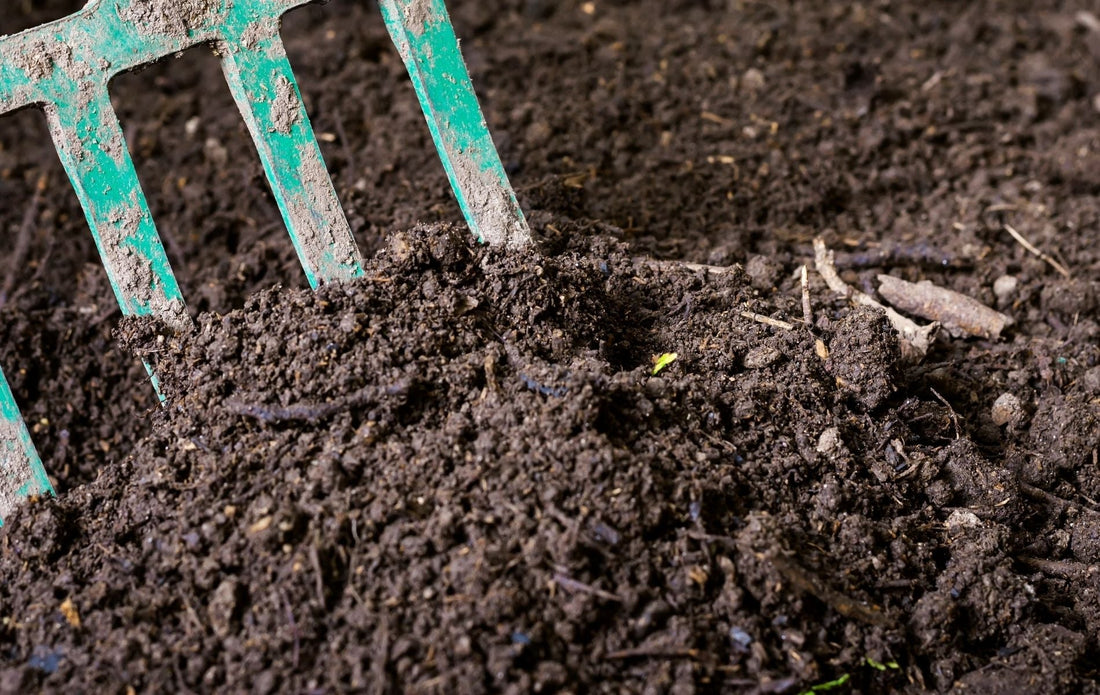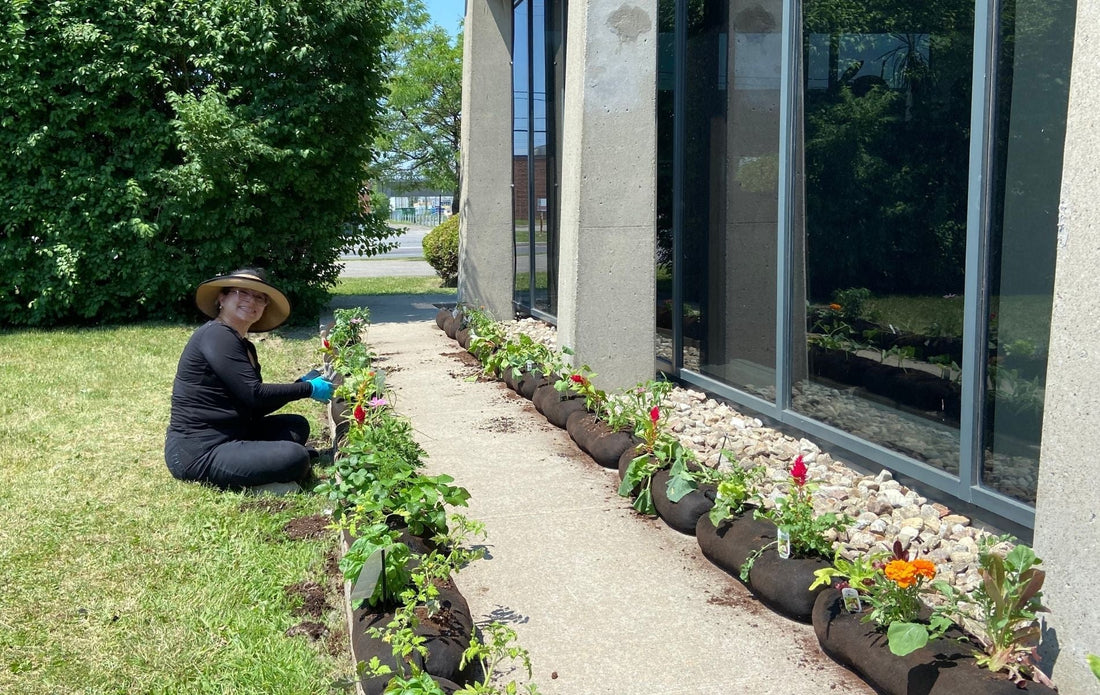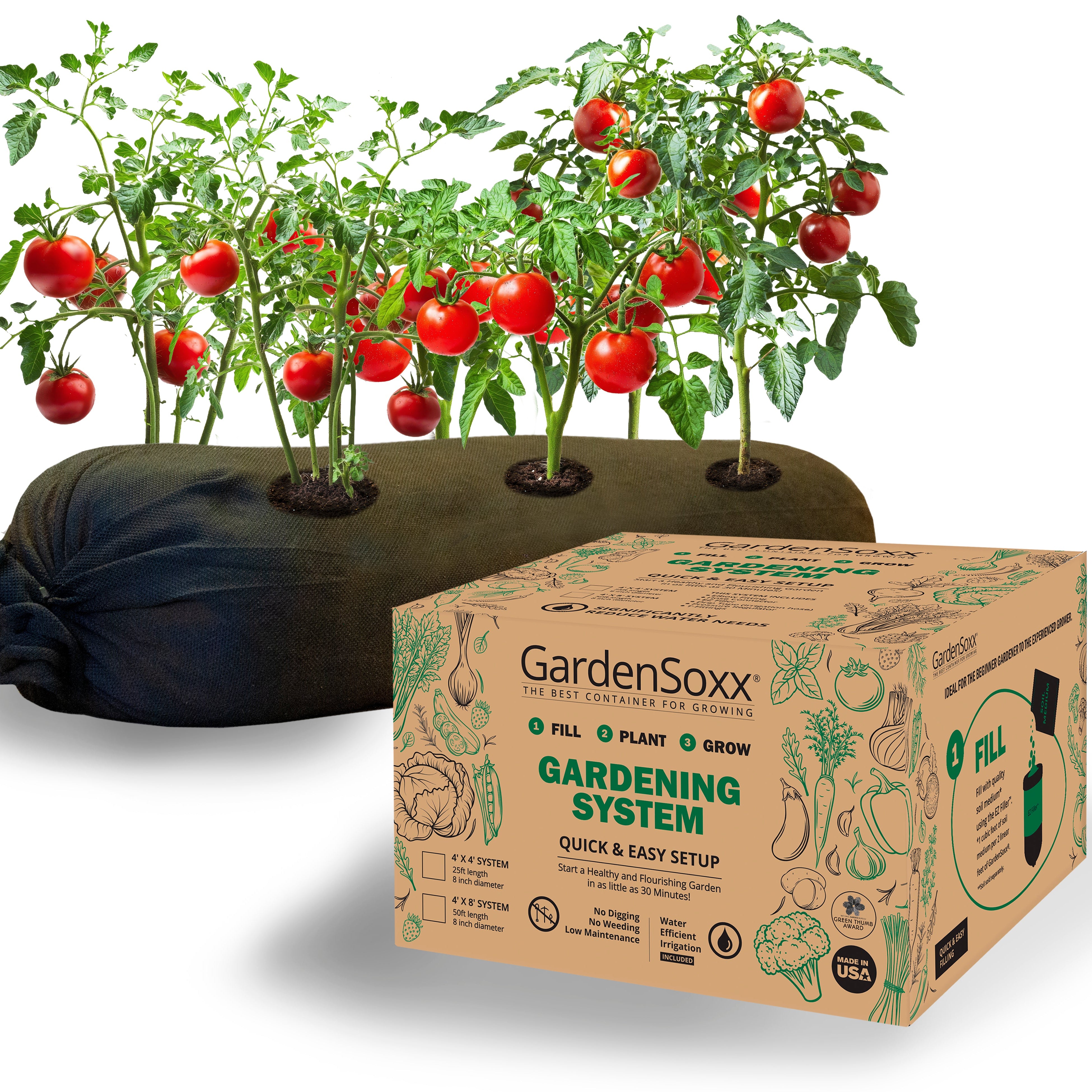Over the last several years there has been a significant increase in the popularity of urban agriculture - with more and more city dwellers relying on community gardens, or budding Urban Gardeners learning to transform even small backyards into food-growing havens for both personal enjoyment and self-sufficiency.
The many benefits of organic gardening are obvious and undeniable; but when it comes to small space vegetable gardening in the city, those benefits increase tremendously and stretch surprisingly far beyond just being able to enjoy your own fresh, healthy produce. These productive green spaces can truly transform an urban landscape - physically, economically and socially - contributing in a most positive way to a thriving population within its borders.
So for anyone who may be debating on whether or not it may be worth exploring the idea of becoming an Urban Gardener, read on to discover how this venture can benefit you and your community in a myriad of ways. We will also explore different methods of small space vegetable gardening and valuable tips that can set you up for success.
Benefits of Urban Gardening and Growing Your Own Food in Small Spaces
Several recent studies make a strong link between Human Health and Gardening - not only in the physical sense but also highlighting the potential of gardening as stress relief, and contributing to improved mental health (1). While fresh air and physical activity in the garden can certainly do wonders for our body, contact with the soil can actually boost serotonin levels in the brain and improve our mood (2). Gardening can offer a connection to nature not often experienced in the city, and thereby benefit urban gardeners by improving their health and overall quality of life.
When it comes to the climate crisis, it is important to consider the environmental benefits of community gardens and how growing our own food at home can help offset the large carbon footprint of commercial food production. When food does not need to travel thousands of miles to reach our plate, the entire world benefits. Additionally, creating green spaces in urban landscapes contributes to improved air quality, storm water filtration and overall lower temperatures (3).
In times of economic uncertainty, urban gardening provides growers with a way to save money on rising food costs. Plus, the economic benefits of community gardens in low-income neighborhoods cannot be overstated. As more low-cost gardening solutions become available, producing nutritious food in urban areas is becoming easier and more accessible to all.
We must not forget the social benefits of community gardens; the way it can bring people together, encourage social interactions and community-building. Gathering in common spaces to create a garden together allows those who live alone to connect with others around them, find common-ground in an activity they enjoy and foster stronger community relationships. Even growing just a personal garden can connect you with your neighbors, leading to conversations and potentially sharing produce.
Space-Saving Garden Ideas for the Urban Gardener
Getting creative with the way you garden is a must if you are working in a small space. These space-saving garden ideas can inspire growers to think outside the box when it comes to growing their own produce at home. From creative containers to using whatever space you have in unconventional ways - urban gardeners are known to be very efficient in their quest for small space vegetable gardening.
When space is limited to grow outward, consider growing upward! Using the structures around you in an urban landscape can provide urban gardeners with a variety of vertical gardening ideas for small spaces. The growing demand for tiered planters has resulted in a wide range of product options available for all types of home growers. These types of planters make ideal containers for herb gardens and smaller vegetable crops to be readily available just outside your door. Alternatively, using walls and fences to create a DIY vertical garden is also a great option that can allow for more versatility.
Getting creative with container gardening for small spaces can be a fun challenge that combines efficiency and style, creating a functional outdoor space with ambience for relaxing or entertaining. Whether you opt for a clean and consistent look or an eclectic style that combines different sizes and colors - container gardening can allow you to group plants together or keep them isolated depending on their needs and growing habits.
If ground space is limited, or to really maximize the space you have, hanging basket gardening can be an interesting option and works surprisingly well for many types of garden crops. Strawberries, tomatoes, herbs, and some smaller cultivars of eggplant, peppers and cucumbers are excellent options to try in hanging baskets. It is important to note that hanging baskets will typically dry out more quickly than containers on the ground - so be sure to stay on top of watering them often, especially in the hotter summer months.
For city-dwellers with absolutely no outdoor space, window box gardening can be a creative way to still enjoy fresh flavors during the growing season. Mix functionality and style by planting your favorite aromatic herbs (like Basil, Thyme and Oregano) alongside edible flowers like Violas, Marigold and Nasturtium.
With more urban areas adopting green initiatives, the popularity of sustainable rooftop gardens has risen significantly in the last few years. For larger gardening projects, or as the ideal community garden space for apartment-living, the benefits of rooftop gardening in urban areas are plenty. Fabric planter systems like GardenSoxx® make the ideal planters for rooftop gardens as their capabilities for intensive growing and their unmatched water efficiency resolves some of the top challenges of growing on a roof.
Essential Urban Gardening Tips for City Dwellers
While there are a wide range of options to choose from, the best plants for urban gardens are ultimately those that thrive in limited space and urban conditions. Choosing crops that produce a high yield on just one plant allows urban gardeners to grow a wider variety of produce. Some of the best vegetables for small space gardening are cherry tomatoes, cucumbers, pole beans, and leafy greens like swiss chard, spinach and lettuce that can be harvested multiple times from just one plant.
Arguably more important than the urban gardener’s crop choices will be the soil that they choose to grow in. Unfortunately, the state of most urban soils and gardening success are not always a winning combination. Any healthy garden must inevitably start with a good, nutrient-dense soil - and this is even more crucial in an urban environment where the soil cannot regenerate the same as it can in rural areas. Growing in containers or fabric planters is the ideal way to have full control over the soil and opting for the highest quality available is highly recommended. Organic soil or pure compost from a reputable source are the top choices for optimal plant health and urban garden success.
Keeping a garden well-watered is crucial in urban areas that can often experience a heat island effect. While watering by hand allows you to have the most control, installing a drip-irrigation system can be more water-efficient and provide you with a self-watering urban garden while you are away. Drip irrigation also reduces the risk of overwatering (which can lead to plant disease), and of plant leaves burning from stray water droplets combined with direct sun.
Getting enough sunlight can be a challenge for urban gardeners in densely-packed cities. If you are wondering how much sunlight a garden needs, the answer will really depend on the plants being grown. Assessing the hours of sunlight available in your desired location is a crucial step in planning a successful garden. Full sun plants will require 6 hours or more of sun per day, while part-shade plants can thrive in as little as 3 hours per day.
Pest control in urban gardening comes with some unique challenges, but can be made simple with a few creative solutions. In cities where birds, rodents and stray pets wander the streets looking for food scraps, a flourishing garden full of fresh produce can become quite the target. Small animals and birds can be deterred with fencing, netting or even by hanging shiny, noisy objects around your garden.
For invasive insects, using organic pest control methods should be prioritized, as city gardens will be more accessible to children and domestic animals. The best organic pest control for vegetable gardens is to incorporate techniques like companion planting with aromatic herbs or trap crops, sprinkling diatomaceous earth or using a natural neem oil spray. These methods can all work wonders, especially when combined together - and are much safer than using chemical pesticide.
Urban Agriculture & Community Garden Success Stories
From educational research projects to sustainable and self-sufficient solutions, these community garden success stories show that urban agriculture is not just a passing trend. With each green space created in an urban setting, we are taking a big step in the right direction for a brighter and more sustainable future.
An ongoing Green Roof project at Southern Illinois University Edwardsville that began in 2004 has evolved throughout the years to give University students and other community members, including children, a chance to learn more about sustainable initiatives that make an impact (4). In 2018, a Rooftop garden was installed using GardenSoxx, and has since been used for research purposes, and to provide food for the campus restaurant. The children at the University’s Early Childhood Center are also involved in tending to the garden, which gives them an opportunity to learn, and build confidence in feeling they are making a difference in their community.
In 2017, a Canadian grocery store made history when it unveiled its 25,000 square foot organic rooftop garden (5), growing produce to be farmed and sold on site. This project was also first of its kind to irrigate their garden with water sourced from the store’s dehumidification system. This innovative project fulfills a need in a community where many have expressed an interest in buying locally-grown food, despite being in an urban area. People want to know where their food is coming from, and this project helps to make that possible.
From solving soil contamination issues and providing low-income communities with nutritious organic produce, to creating a more self-sufficient supply chain for a city food bank, exploring innovative ways to grow food in urban areas is an important step toward sustainability.
Remember that whether you are a beginner or a pro, there are always opportunities to learn new things in the garden. Becoming an Urban Gardener can transform not just your personal space, but your entire community. The benefits to your own health and mental well-being alone are worth the effort - but the larger environmental, social and economical benefits can truly make a larger impact that is well worth exploring.
So, if you have been exploring this idea, now is a great time to take the plunge. Starting with small steps like a window box or hanging garden is a great way to begin before moving up to vertical or container gardening and producing food on a larger scale. Choosing high-yield plants, using quality organic soil, and staying on top of watering and pest control will ensure a thriving garden. There is no need to strive for perfection; simply enjoy the journey and learning process.
Start by assessing the space you have available, and planning a rough layout, jotting down a list of plants you are interested in growing (starting with crops that you regularly consume). Don't let limited space deter you—urban gardening is all about creativity and efficiency. Have fun getting your hands dirty and experiencing the joy of growing your own food, while contributing to a healthier environment and a more connected community.
If you are looking for more support or to foster connections with other gardeners, search for local gardening groups in your city or join an online group that can offer valuable advice and support. Check your local community centers or garden centers to see if they offer workshops or classes that can expand your knowledge. By exploring all possible resources, you will gain the knowledge and confidence needed to create a successful urban garden.
Happy growing!
Cited Sources:









